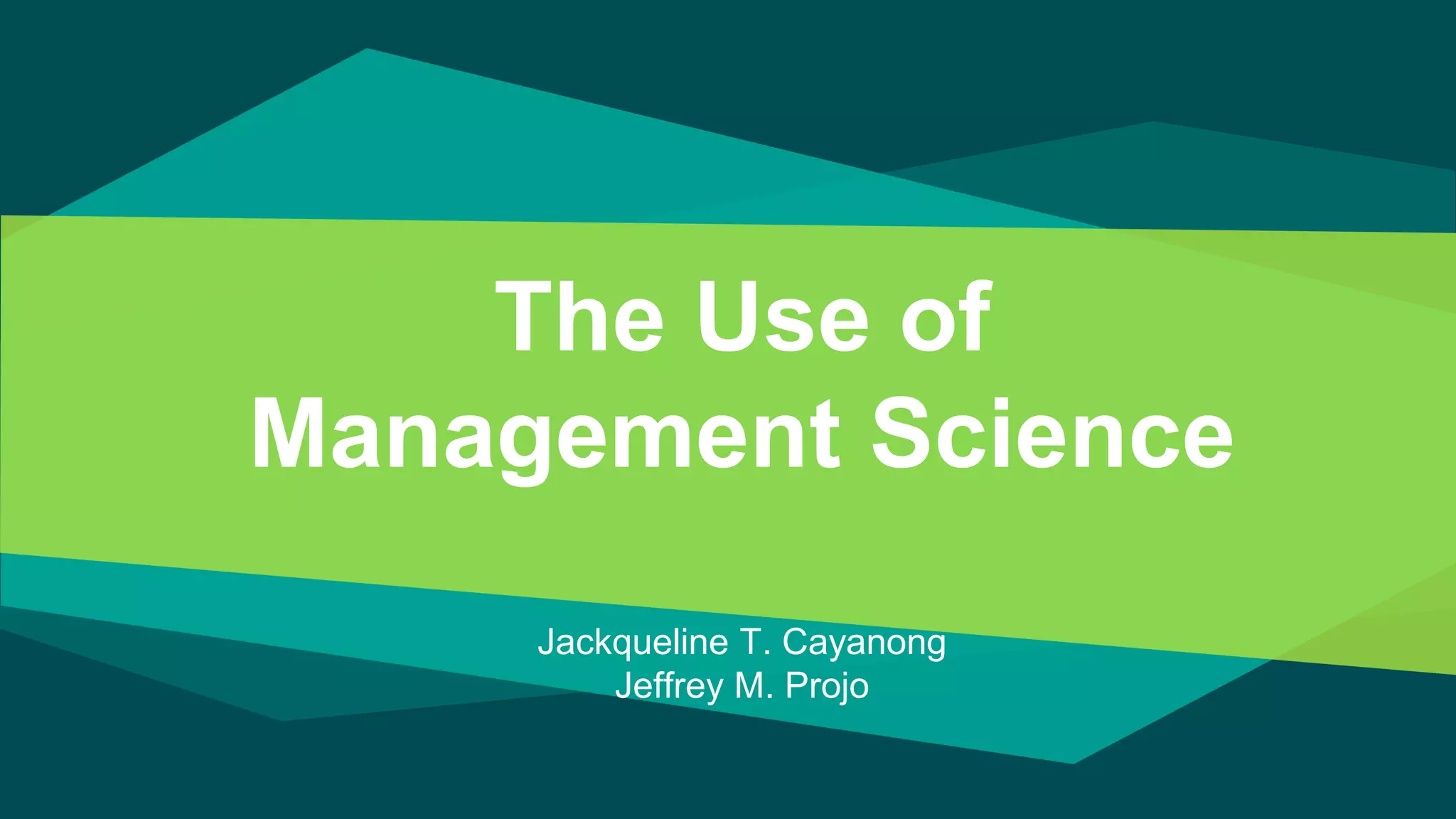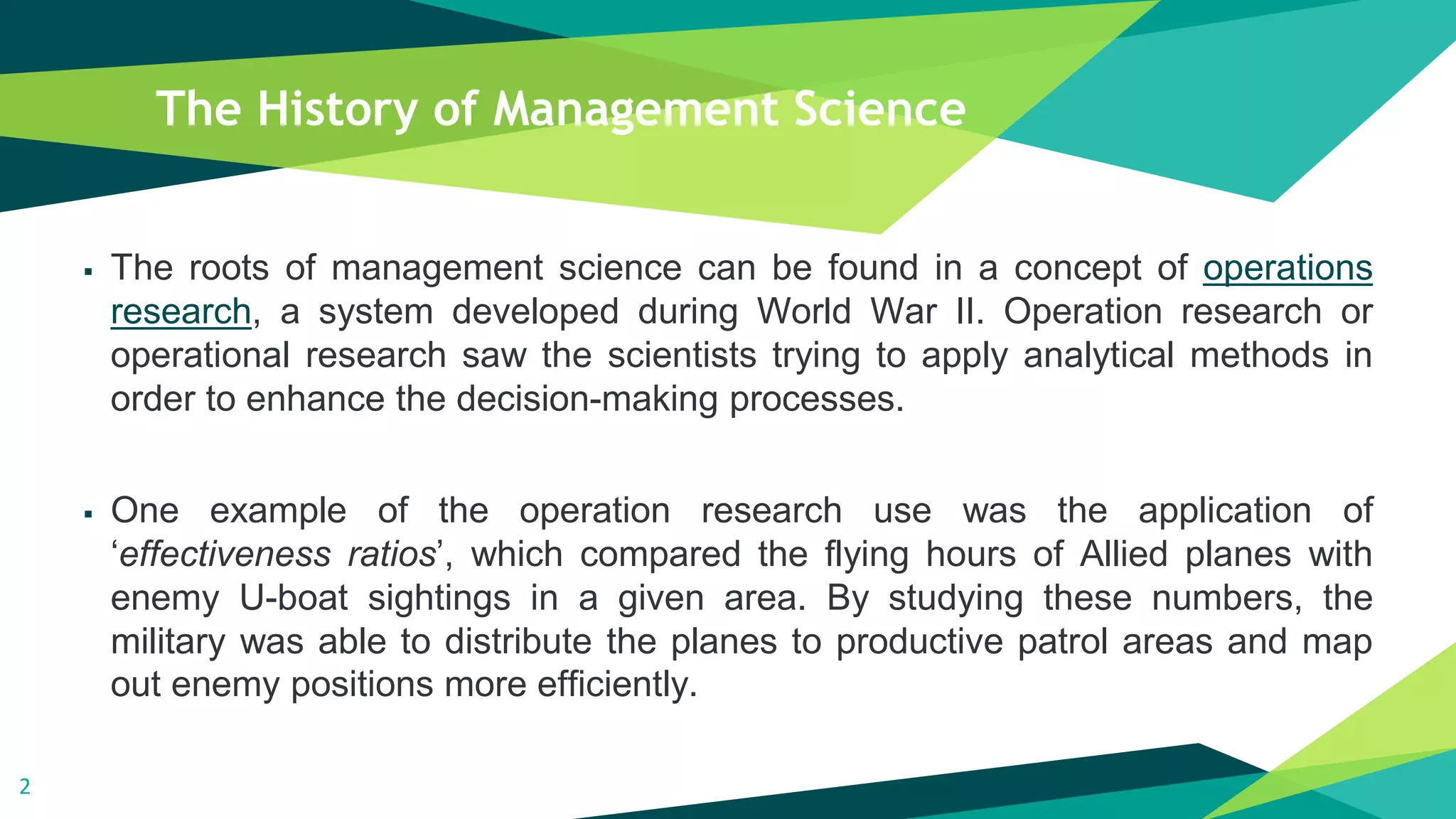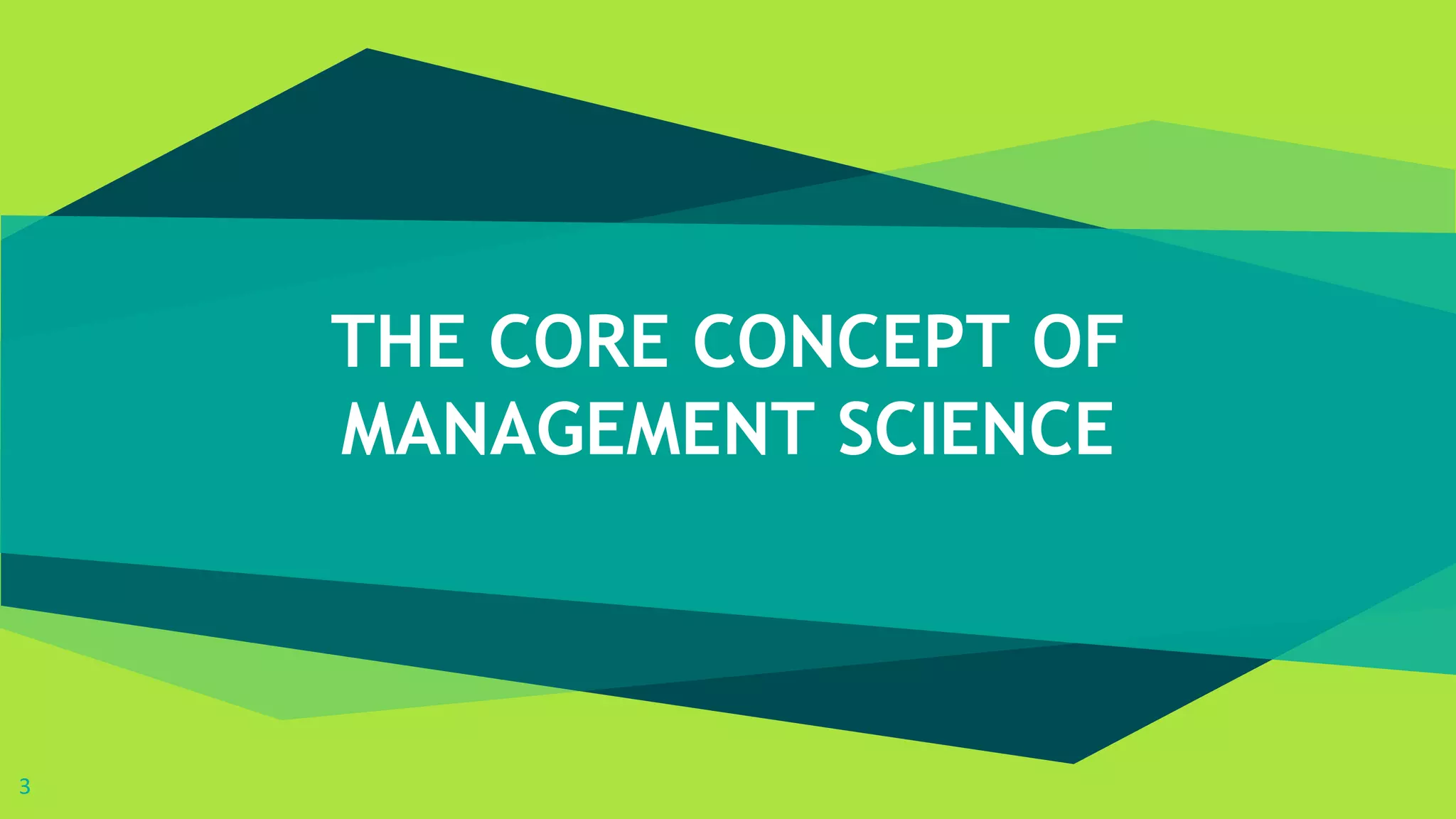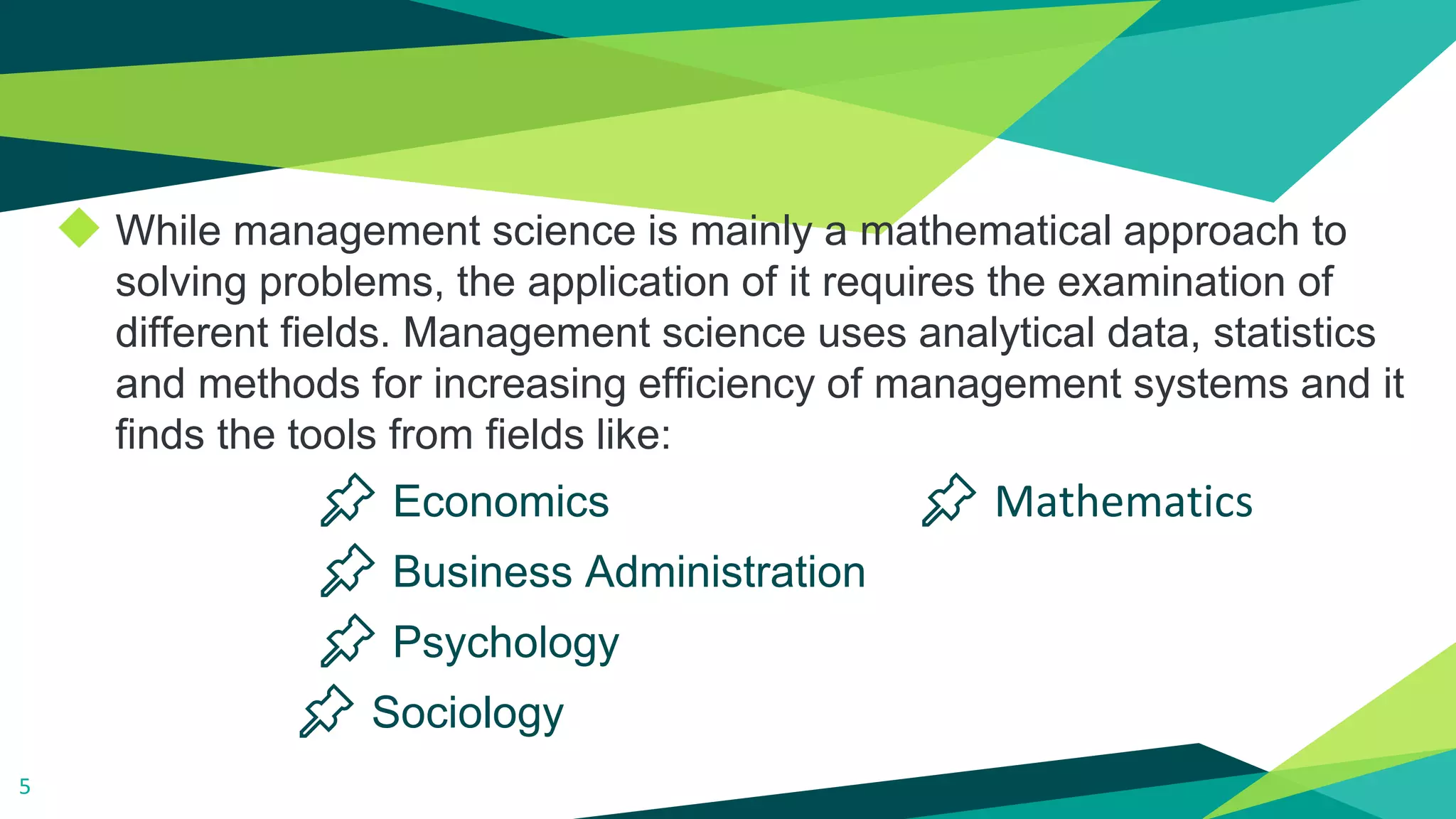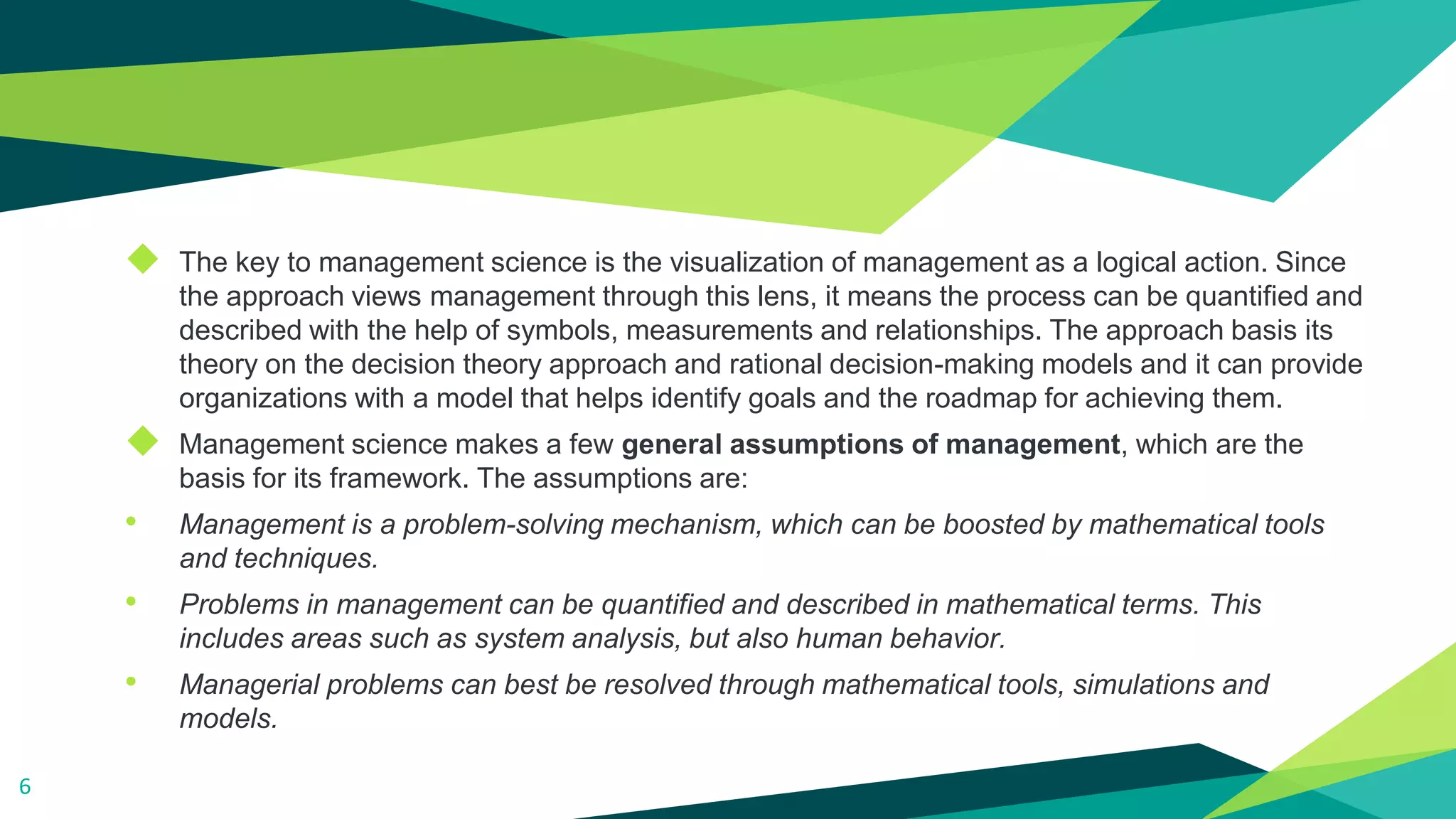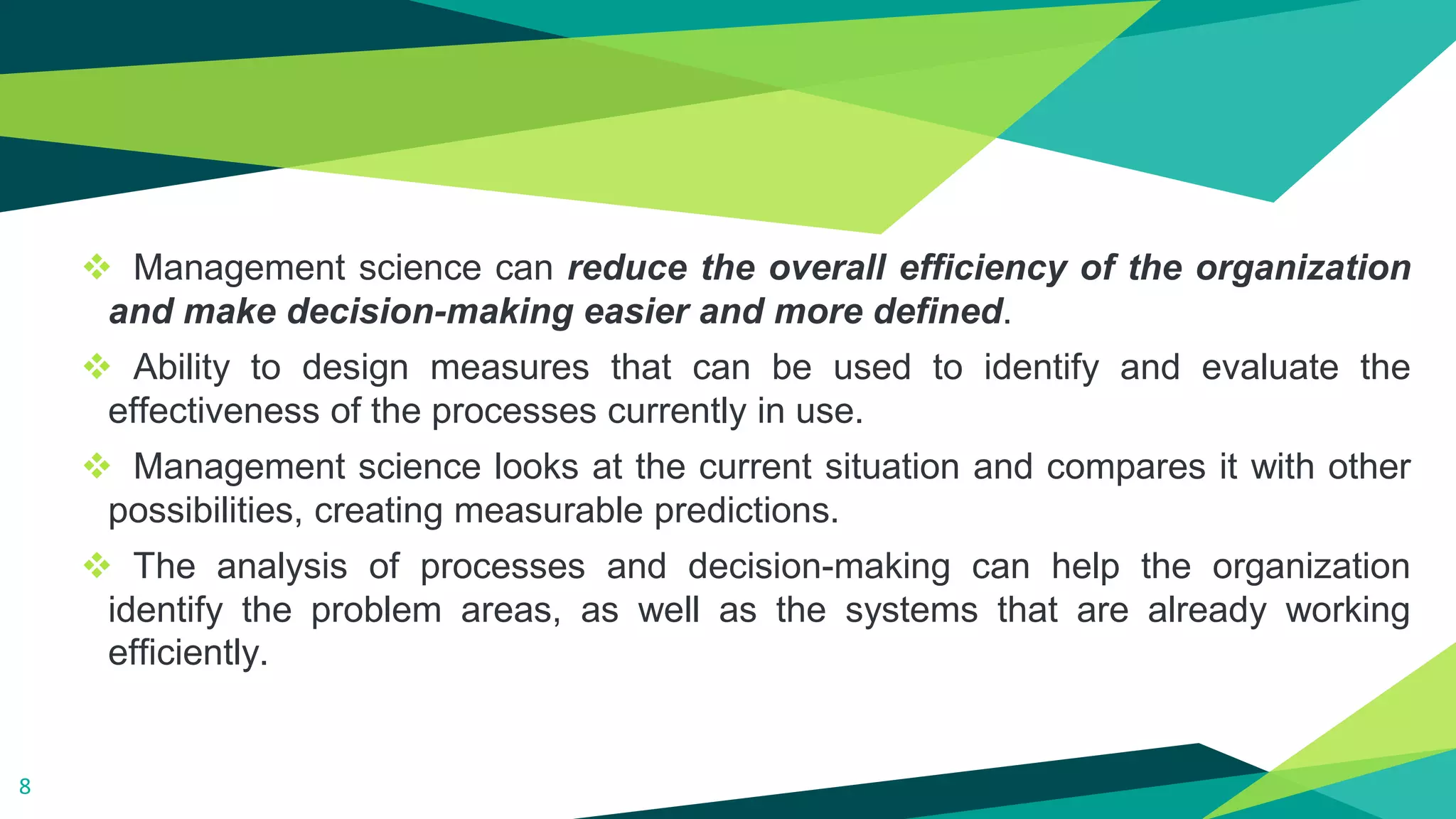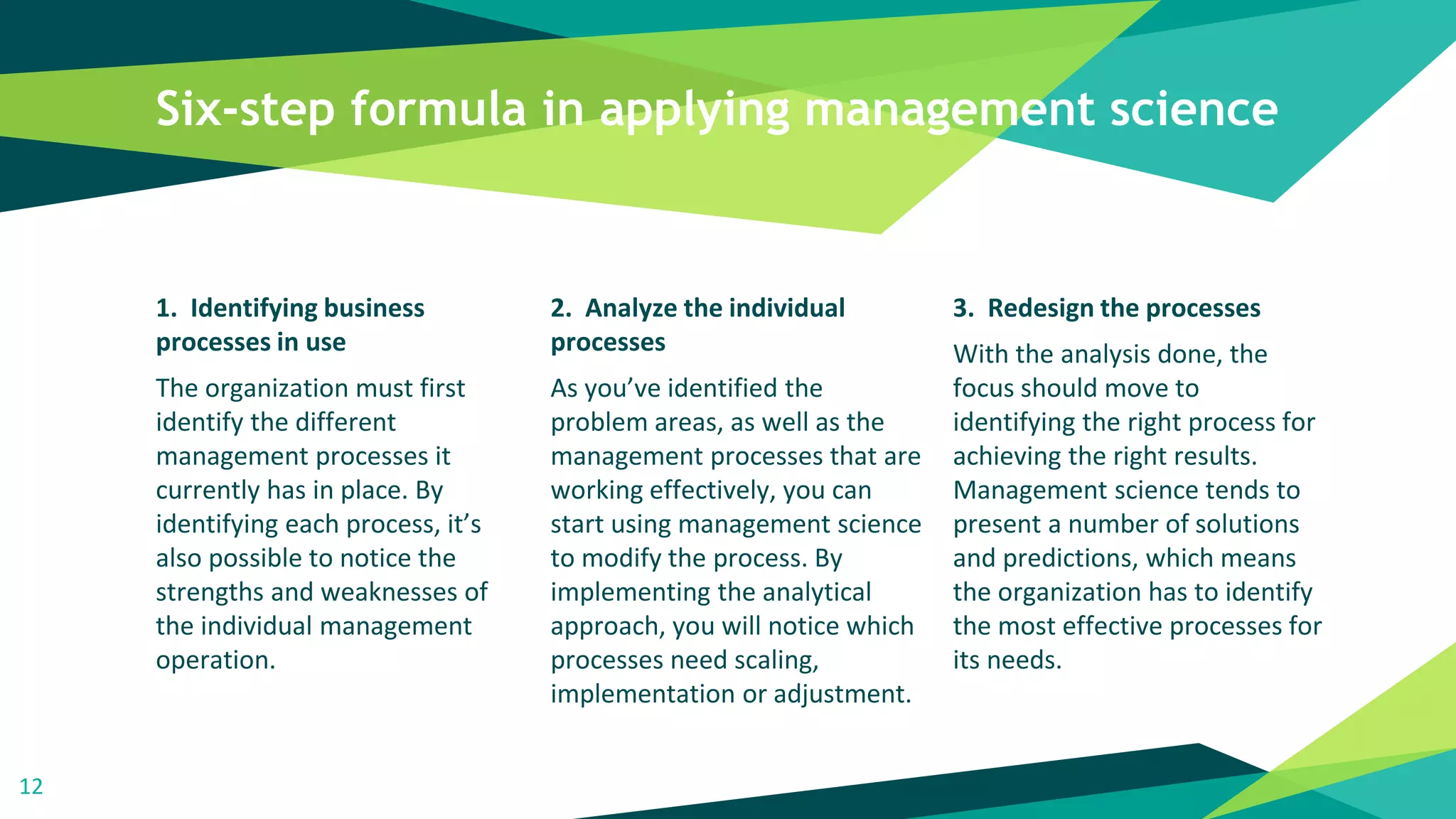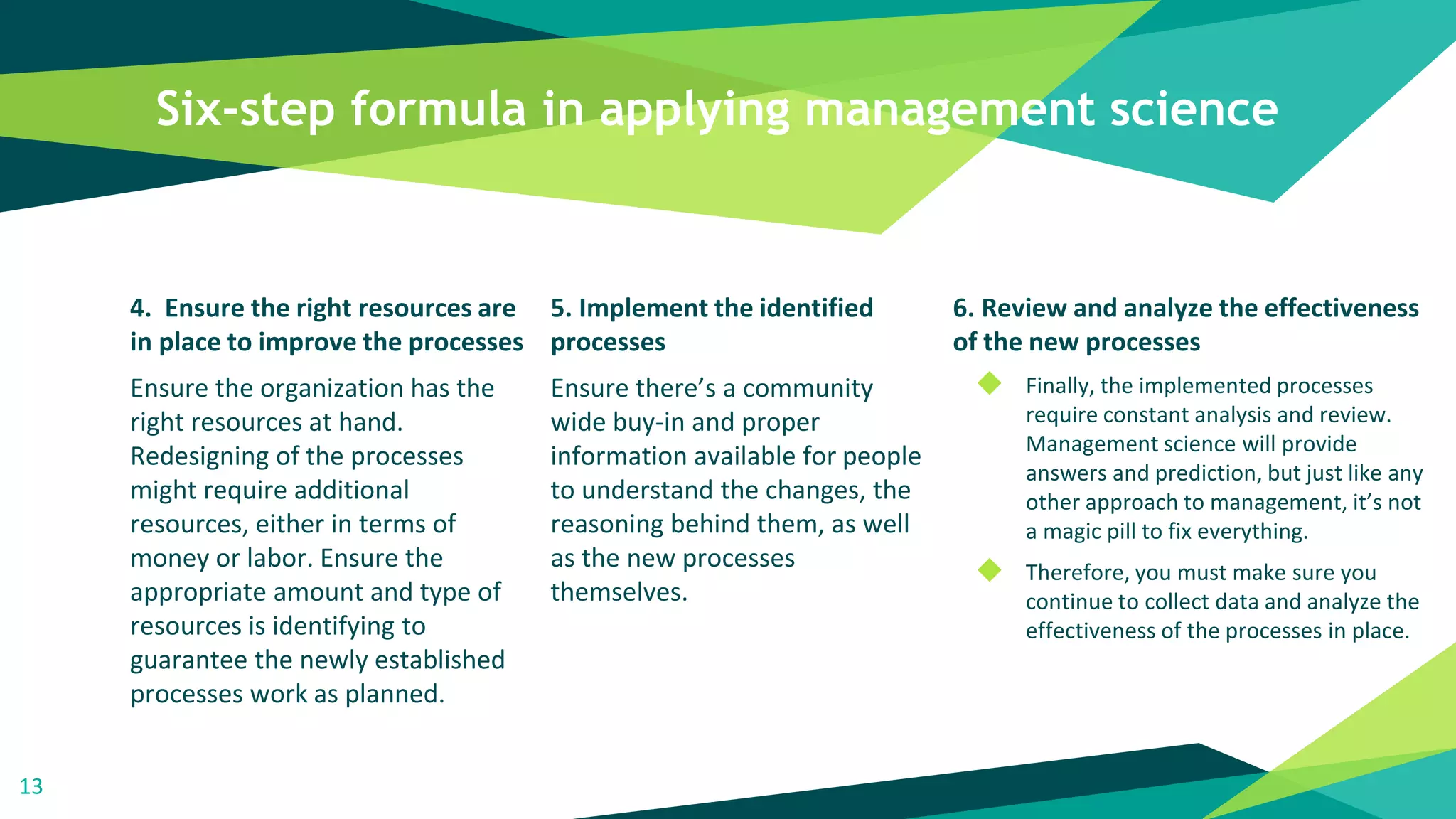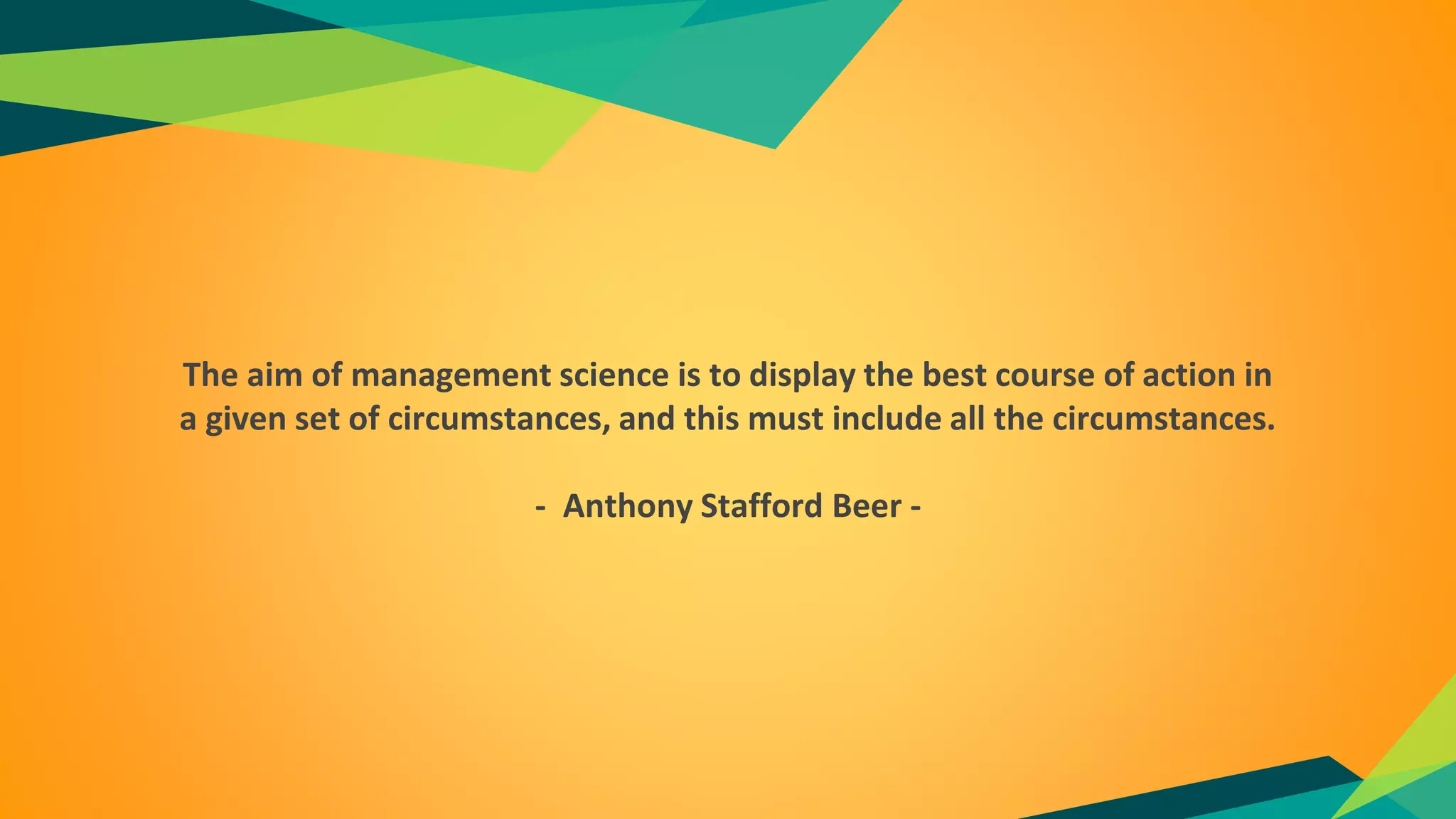The document discusses the history and concepts of management science. [1] Management science originated from operations research during World War 2 to apply analytical methods to decision making. [2] It uses tools from fields like economics, mathematics, business administration and psychology to examine organizations and find ways to improve productivity and efficiency. [3] The key is viewing management logically and quantifying problems to solve them using models, simulations and other mathematical techniques.
